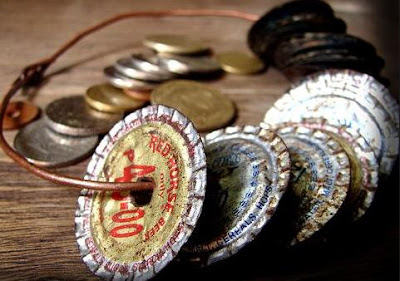5 Interesting Facts You Didn't Know About Paskong Pinoy
ADVERTISEMENTS
People in the Philippines like to celebrate Christmas for as long as possible! The playing of Christmas carols in shops can start in Ber Months! The formal Christmas celebrations start on 16th December when many people go the the first of nine pre-dawn or early morning masses. The last mass is on Christmas day. The Christmas celebrations continue to the First Sunday in January when Epiphany or the Feast of the Three Kings is celebrated.
Here are some Interesting Facts about Christmas in the Philippines:
1. We have an own version of leaving empty socks or stocking
 Even if we be familiar gone the western tradition of leaving blank socks for Santa Clause to make laugh happening later goodies tiny known is the fact that we Filipinos with have our own submission on the tradition.
Even if we be familiar gone the western tradition of leaving blank socks for Santa Clause to make laugh happening later goodies tiny known is the fact that we Filipinos with have our own submission on the tradition.2. "Simbang Gabi" was once banned in the Philippines.
It's hard to imagine Filipinos Celebrating Christmas without the time honored tradition of the Simbang Gabi or also known as Misa De Gallo/Misa De Aguinaldo. However, colonial Filipino did miss nine years of Simbang Gabi services from 1680 to 1689 due to a Vatican decree which implemented by Manila Archbishop Felipe Pardo.
The explanation is which was plus implemented in Spain, the Azores and Mexico stemmed from the churchgoers and choirs showing off of singing Christmas songs in their native tongue.
After Pardo's death, however the clergymen with the notable of the discalced Franciscans resumed the practice.
3. Carolling Used to be done in Spanish

Nowadays, we often hear people singing Christmas in English, Tagalog or some adding together original dialect. However, there used to be a period once singing such songs were ended in Spanish.
During the times of colonial Philippines, Spanish carols (Villancinco) were initially unaccompanied finished during Mass but soon found their habit into the streets due to their popularity. To the celrgy's disdain, some of the more-naughty carollers would insert less than devout lines and green jokes in the lyrics.
Villancinco went out of style when spanish rule ended, paving the way for carols done in English and the Vernacular.
3. First Christmas in the Philippines Celebrated before Magellan Arrived
 A little known controversy about the Paskong Pinoy concerns whether an Italian priest managed to beat the Spaniards by more than two centuries in Celebrating the archipelago's first Christmas.
A little known controversy about the Paskong Pinoy concerns whether an Italian priest managed to beat the Spaniards by more than two centuries in Celebrating the archipelago's first Christmas.Father Odoric Mattiussi, a franciscan from Italy, was said to have administered a Misa De gallo sometime between 1280 and 1320 AD in a place he called Thalamasin or "Land of Salt"
4. Real Purpose of Hanging Christmas Parol
 Use to decorate in homes every month of BER, the Parol is easily one of the most iconic symbols of Filipino-style Christmas Season. It's also surprising to know that early Filipinos based the parol on th Mexican Pinata.
Use to decorate in homes every month of BER, the Parol is easily one of the most iconic symbols of Filipino-style Christmas Season. It's also surprising to know that early Filipinos based the parol on th Mexican Pinata.During the Spanish era the parol was more than just a decoration. They were originally intended as lamps in the dark which lit the way for Churchgoers attending Simbang Gabi or Misa De Gallo.
5. One Filipino Christmas Song Dedicated to World War II
ADVERTISEMENTS














👍👍👍👍👍👍
ReplyDelete